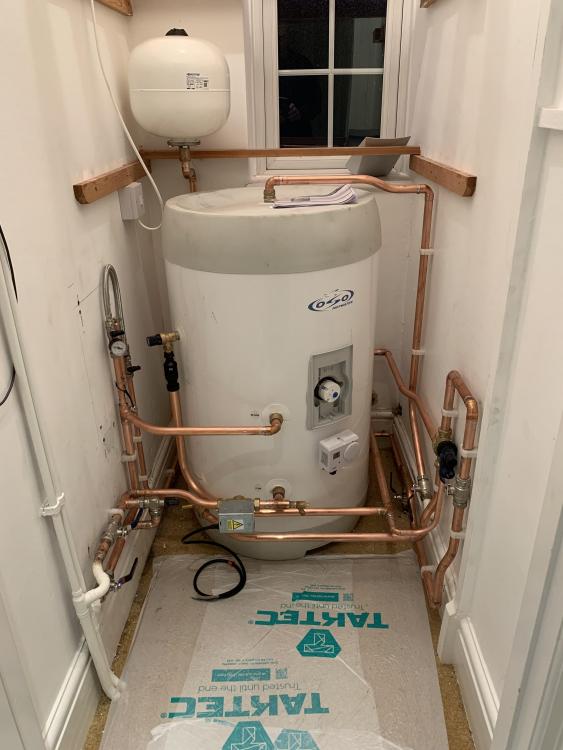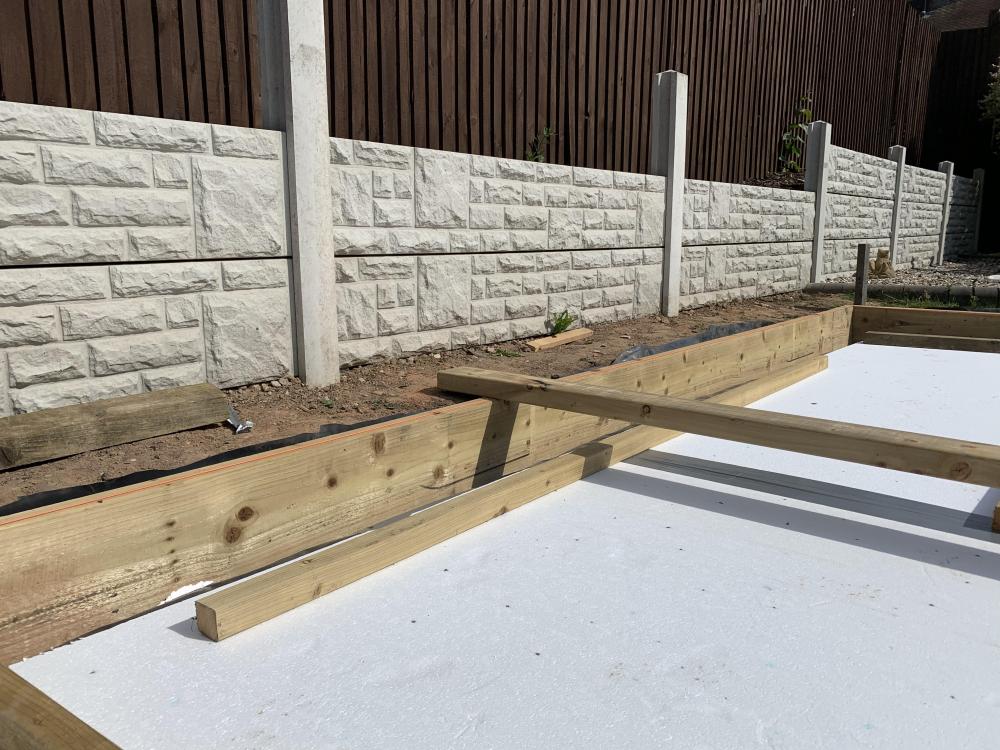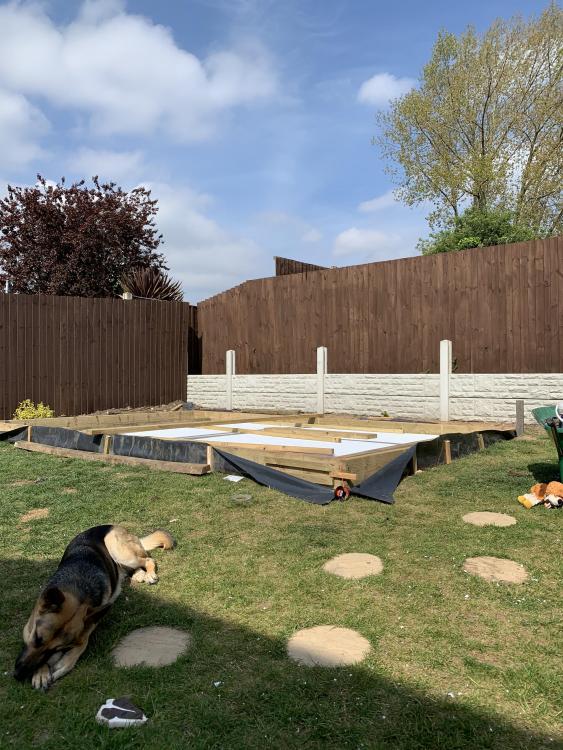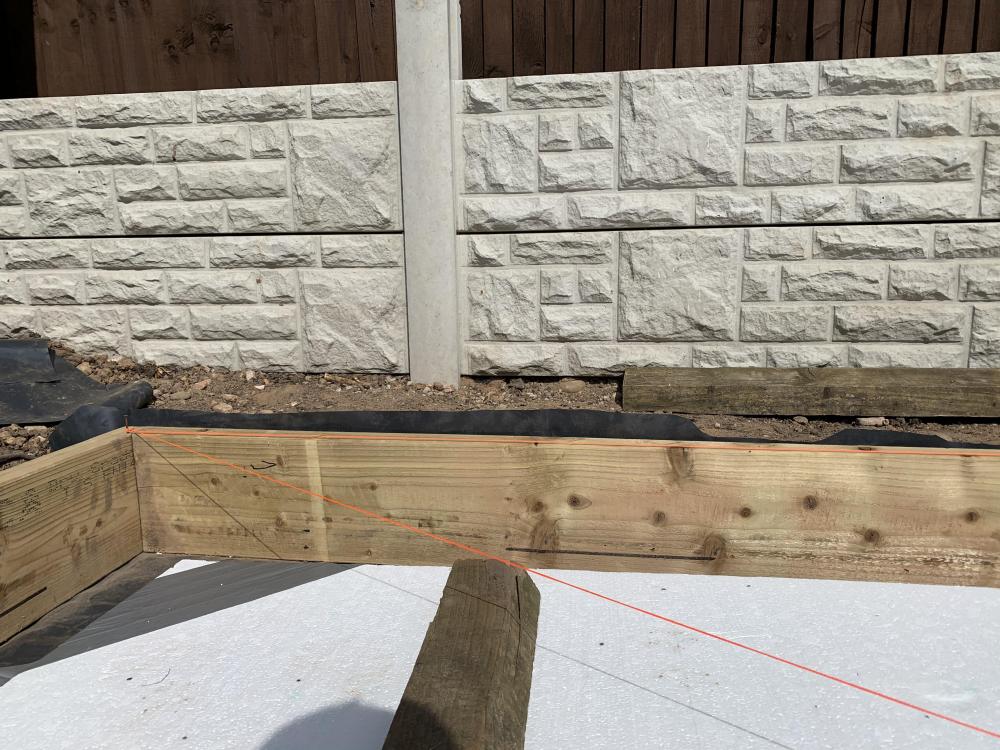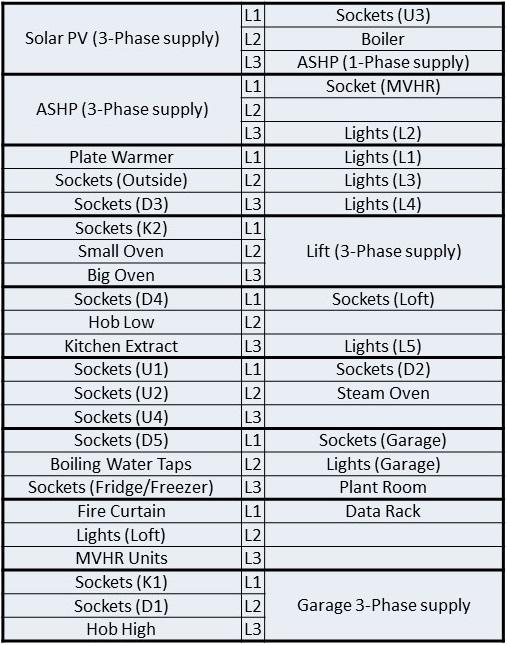Leaderboard
Popular Content
Showing content with the highest reputation on 05/09/20 in all areas
-
If you've worked in precision engineering (as I do), then unless you get a very good builder then book a long holiday and come back once it's done, you will be mostly disappointed otherwise. I've ended up re-visiting so much of our place, getting there now though, and I've learnt not to expect (total) perfection.4 points
-
There are loads of places that can supply these. Just googled https://www.howdens.com/joinery/doors/howdens-solid-core-blank-plywood-flush-fire-door-obj-sku-family-25306489?productFamilyId=DXF0048&skuId=DXF0048 https://www.lawsons.co.uk/product/2440x1220x44mm-exterior-door-blank-fd30/j05500010 https://www.emerysltd.co.uk/fd30-hardwood-door-blank-c2x272859143 points
-
To update this. I contacted our BCO and explained that I thought our architect had made an error in calculating our soakaway requirements. He had drawn two, one north of the building for a roof area of 110m2 (4m3 of soakaway crates) and one south of the building for a roof area of 80m2 (2.8m3 of soakaway crates). The initial response from the BCO was mild confusion as to why there were two soakaways to which I had no answer. The second response was "...Can’t see why the design for the 100m2 soak away is not ok..." in other words, he was pretty vague about the whole thing. So I responded by telling him I'll put 3m3 of soakaway south of the building and he's happy with that. What I've learned is that calculating soakaway size is really straightforward if you use the 'rules of thumb' and a real dark art if you try and include percolation results in the calculation. It would also seem to be a dark art for my BCO (either that or he couldn't be arsed to enter all the data he had into his spread sheet?). I've also learnt that watching water drain away for the percolation test is therapeutic but otherwise a complete waste of time.3 points
-
Do you need to put this pipe in now. How about compacting 200mm layer with your feet and then just leave it alone, I find I do lots of land remodelling around my place and leaving a few days for the weather to dry/ wet, settled the area naturally ready for me to then stamp it down again before adding another layer. Think about it, just back fill for an hour and go and get on with another chore and come back in the morning to do a little dance on it, do a bit every day for two weeks and it should firm up very well. No whacker needed.2 points
-
Figured I'd open a specific topic to narrow my thinking a bit. So. BASEMENTS! Functions: which things in your house do you have, or would you loved to have had in a basement (if you only could)? Which things you have in a basement do you regret? For example: - An electrics closet (servers? consumer unit?) might be 'tucked away' nicely but I can imagine getting cables there is a hassle? - Air conditioning/ASHP/MHVR? Noisy devices, but they typically need 'outside access' and short pipes, so putting them in a basement might decrease their efficiency? - Freezer? Basements are cold, so efficient, but is it a drag to go up and down the stairs carrying food? - Washing machine? Noisy but carrying them up/down extra stairs is a hassle? - Guestrooms? Kid Rooms? Quiet, but no light gets you down? - Showers/Bath/Sauna? Getting wastewater out is a hassle? Cost vs size and other factors: - What would be the cost of a 1m2 basement (meaning: are there any costs you always have to pay?) - Full house size saves on some costs but at the end of the day is serious £££ - I doubt you can get it below 1000? - In NL, it's quite common to create a crawlspace rather than a basement. Basically a 1m high unfurnished basement allowing easy access for plumbing etc. - Furnishing - if we assume an 'empty hall' (with the necessary weight supports) is 1000/m2, how much would making it 'proper rooms with all the normal, not excessive trimmings'? -> what can we do to minimize basement cost? Position: - As I understand it, neighbours might not like 'basement building activities' very near to their property(line). not sure why? Is there a risk that a basement cut too close to the neighbours will unhinge their property? - Am I correct heating/cooling gear strongly benefits from being right next to a wall? Or is it fine to get a reasonably short duct (2-3m?) for whatever heat/gas/air needs to go in and out?1 point
-
Won't make any difference. Built walls right out to the edge before. That's why you build on a wide Foundation as it so easy to dig slightly off line.1 point
-
Depends on the racking strength of your walls, downwards pressure is not a problem, but it could all fold up like a pack of cards if you have no racking strength.1 point
-
Well only if you put it in the house. Nothing to stop it being elsewhere and running insulated pipework into the house. But agree with not really worth it as ASHP are so good now. And easier to buy.1 point
-
Our PP included a GSHP initially, but when I costed it up it was more than 4 times more expensive to install and would have taken several decades to recover that extra cost from the saving in energy use through life. There was also a much higher maintenance cost, because the antifreeze in the ground loop needs changing every few years, and the stuff costs a fortune, as it's a special environmentally safe mix. I had planned on a DIY GSHP install, too, to save money, using the units supplied by Kensa, down in Cornwall ( https://www.kensaheatpumps.com/ ). They were very helpful when I spoke to them, and had we decided to go for a GSHP I would almost certainly have used them. I had to get a minor amendment to our PP to switch to an ASHP. but this was pretty quick and easy, and the planners had no problem with it. It seems that planners have now realised that ASHPs are very quiet, with the advent of inverter driven units, so there is no appreciable noise nuisance (I think this may have been the reason for needing PP for and ASHP).1 point
-
the only advantage a GSHP will have over anASHP is if we had winters where it was -20c for months ,like canada and some parts of europe - when the better COP ratio of using the heat in the soil . in worst winter here ASHP could be close to a cop 0f 1+ --but that will only be for a few days ,then add all the extra expense ---so unless you have a lake you can dump your slinky into very easily ,then I cannot see a good reason to go GSHP no need in uk to use anything but ASHP and if a very modern insulated hosue then you won,t need monster heating anyway do the numbers and you will see1 point
-
As @ProDave says it is so expensive to install that it is unlikely to be worth it1 point
-
Yeh they are a spring and a piston - looks like the cap of the piston1 point
-
The house we completed in 2016 has velux windows and sliders - mostly west facing. The second floor (in the roof) has two bedrooms and a shower room - each having velux windows with blackout blinds. However the rooms get unbearingly hot - due to the amount of insulation I think. We are thinking of applying a solar reducing film to all the veluxes in the lounge and kitchen/family room (cut to size by Purfrost). Supposed to reduce the heat by 61%. (NB Film is not as easy to apply to a sloping window) We loved all the glass but the architect (architectural technician) who has been doing this a very long time failed to point out the downside. Like the others have said, it is best to sort this as soon as possible to ensure the house is comfortable. Look at Pilkingtons Glass website - they do a solar control glass which may be more expensive but probably worth looking at. We'll consider this on our next build which we are in the process of doing plans for at the moment. This site is really great and definitely worth listening to others' experiences to enable you to try and make any amendments before its too late or too expensive.1 point
-
1 point
-
Is there a non-return valve anywhere in the system ..??? And my guess is the blue butterfly valve swivel ball..1 point
-
Not sure TBH as I've never disassembled one, just cannot think of what else that could be..... Possibly a stray blanking plug installed by a manufacturer of one or other bits of kit upstream? My best guesses I'm afraid!1 point
-
FWIW, I would not fit a factory finished tray flush with the floor. You should, ideally, go for about 15mm of tray being proud of the FFL so you have some 'meat' there to seal back against for water-proofing immediately outside the tray ( aka the splash area ).1 point
-
I looked into it for my build, and the cost of the slinky pipe and all the fittings, and the brine to fill it, way exceeded the cost of the actual heat pump. And that was not including the cost to install it. Then add periodic replacement of the brine and disposal of the old. An ASHP was a no brainer by comparison. The GSHP also puts the noisy bit with the compressor inside your house.1 point
-
I'm going to try a third time before I go out in the garden and do something more productive. I'm not sure why you keep answering as though I'm asking why glyphosate is sold as a salt. I'm asking why a product containing glyphosate IPA salt 27.9 % (w/w) ***AND THAT ALSO CONTAINS*** 32.0 % (w/w) of 2,4-D DMA derivate salts is: Hence why I've twice now said:1 point
-
Very strange. As a guess it is most likely form the ball valve.. possibly the half of the 'ball' part that creates the seal in the ball valve. My guess is it has split in two and come away. I would have normally thought it was metal though.1 point
-
https://www.ebay.co.uk/itm/15mm-27mm-PIPE-INSULATION-10m-thermal-lagging-protection-hot-cold/401593150594?var=671333738851&hash=item5d80d12c82:g:luoAAOSwBFVbjjgR Just slides over the pipe, but a 2 man job for long runs. Glass-fibre rods ( electricians ones ) will make short work of threading them through.1 point
-
I have seen that mentioned. Surely your side wall did not straddle the boundary line so your wall is solely within your boundary? The eaves and gutter may overhang but ignore that for the time being. Irrespective of the PWA, a neighbour cannot connect to or use a part of your wall without your consent. The way they’d get around this would be to build a separate and therefore independent wall, which would run parallel with yours. The excavations for that wall may indeed trigger requirements under the PWA. Do you have a photo from the garden looking back towards the house?1 point
-
I was not sure if you were after a painted finish? Be careful as some of the door blanks are really heavy - make sure the sliding door kit is up to it - you may find lighter weight blanks available.1 point
-
1. Reasonable 2. No chance. 25-50 if they can be bothered. It will be better if the lads laying the concrete are also laying the blocks. 3. Should be spot on if you use a surveyor, bricky and a tape, could be anywhere I have seen a wall built completely on the wrong side of a line, so 100 mm out of place, check it before proceeding. 4. Are you talking below dpc or face work. 5. As above 6. I’ve actually seen pipes the wrong side of a wall so toilet pipe in the room next door. My answers are based on 30 years of working in the real world not downloading the latest government guidelines. I would do two things in your case 1. forget your an engineer, it’s a house not a spaceship 2. Get all critical points marked on a set of plans including pipe locations, then get a surveyor to mark these out as the job proceeds, choose the most local company to your site so a visit to site can be done in under an hour, I had 4 site visits for setting out and the bill was about £370. You are looking at some points with to much detail but have not listed things that in my opinion are far more important. Footing level is not not important at all, a bricky can cope with 50mm out of level and in 3-4 courses of blocks underground he will correct it no problem. However you have no mention of floor level, this is a far more critical point, there are many on here that have been dissatisfied with the finishing on a floor with many bags of levelling compound needed. Also door threshold levels, these are crucial to getting a seamless finish. I would relax a bit on tolerance until you get up to dpc get it set out correctly and triple check it. A simple thing but something people may not be aware of, your architectural drawings come in layers that are drawn on at stages as the architect designs the house. For a couple of extra quid you can get the layers removed to give you simplified drawings So you can get all layers removed to just give you a foundation layout then one that just shows corners for blockwork, which can incorporate pipe locations1 point
-
1 point
-
We're building a full footprint basement as part of our project. We looked at various scenarios (split level, partial basement, no basement but bigger footprint) and the full basement came out best value for money. I think I calculated it as an extra £400/m² compared to standard ground floor build, but we get an extra 100m² of space. - we have a limited footprint to work with, in order to get a 4 bed house, we either need a bedroom on ground floor or in a basement. - we are on a sloping site, so have to deal with a 1.5m fall from front to back of house regardless. - rear aspect of basement will be at ground level - we will have a utility/laundry room, plant area, cold storage room, plus a large "store" that could be used as a gym/play room/study etc in future- no money for that now but have included an escape window at least. -hope fully having a dumbwaiter (3£k) from 1st floor to laundry room. Otherwise navigating two flights of stairs with laundry baskets would be unnaceptable for my partner (mobility issues) - costs have come back and raw construction cost is about £10k more than building the same 100m² at ground level - about £6k of that is tanking and £4k ground works. It's a standard concrete raft with ICF walls- exactly that same as if it were at ground level. -expect to be another £5k of additional costs in form of extra retaining walls and drainage/landscaping costs. We will be able to have a (sparce) completed basement at passive standard for less than £1k/m² -Our heat pump will be approx 10m from the plant Room.... As long as the pipework is internal, right diameter and insulated, it doesn't matter really. -mvhr is having to go in a hallway as needs to be on an external aspect wall. -to save money and embrace the basement feel... We aren't having suspended ceilings, walls will be painted block, (ICF walls will be lined with ply) electric fittings will be surface mounted, floor will be poured resin or vinyl. No skirtings etc.1 point
-
some of your boulders at bottom to act as a temporary dam while you fill up above them + compact it ?1 point
-
It's part of the foul drainage run ....1 point
-
1 point
-
1 point
-
What about this? I reckon I have 2 inches I can come up with my boards as I’m currently sitting below the bottom of my gravel boards at the back. I could take boards and dpm off. Sweep sand or remove it temporarily. Ad another 2 inch of mot 1 across whole lot( would a tonne bag do it ? ) put sand blinding back Dpm insulation re bars etc. or just ad 2 inch to my boards as is s as and fill with concrete. That would be 6 inch in middle and 8 inch around the edge. 1st option I believe is cheaper but more labour. (Don’t have much else to do currently) 2 nd option more expensive as a fair bit more concrete. I really wanna maximise head room inside1 point
-
Our PV installer told us to ask an electrician. I asked a few, and the DNO and three different suppliers (ovo, BG, Bulb) and none of them knew. Ovo was perhaps most enlightening as the customer services guy said he had no idea how 3ph export metering was supposed to work, but that they must be complicated as he fields a lot of calls getting an engineer out to put it right. The DNO confirmed that for residential installs they have no expectation or requirement of the usage being balanced a across phases, and billing (inc penalties for unbalanced use) is not in their control. If you go 3ph, one mitigation would be to sign up to the Octopus Tesla energy plan, as that charges the same for import and export so the metering is then moot. Definitely would make sense if the suppliers vaguely supported it! We're having 8kW PV and originally thought a 3ph inverter would be marginally cheaper vs 2 single ph (but not by enough to offset having the new supply installed), but we're having solaredge optimisers anyway and their new optimizer-optimized inverters will go up to 10kW on a single phase in a single box and actually works out cheaper than the 3ph one. On the plus side: inverters only last a decade or so, so you should have plenty of opportunity to change your mind over the lifetime of the house.1 point
-
That's exactly what we already have (just need to get the SMART meter installed)! The old bungalow we demolished already had it.. We have no immediate need for 3 phase (apart from faster charging of a future EV), so really just trying to work this out from a PV planning perspective. A three phase inverter probably makes the most sense given the size of the array (even though the DNO will apparently let us export 10kW), but we wouldn't want to use a three phase supply/inverter and for this to significantly impact self-consumpton. None of the PV suppliers I've talked to really know much about any of this at all ?1 point
-
The clue is the name . . They are NOT your Parish Council, they are your Local Authority, a District Council! District Councillors definitely can call in applications to committee, and as the planning committee is made up from District Councillors they do have the authority to decide planning applications. Parish Councils are the next tier down, unpaid volunteers that represent the interests of smaller communities within a District or Unitary Council.1 point
-
Hi Keeko, Our house is all electric ( no gas on the golf course where we are ). We have just recently replaced our 2 x 5kW SunAmp PV’s ( somewhat troublesome ) with a Uniq12 (actually 14kWhr capacity apparently). Up to now very impressed. We have a 6kW solar PV East/West split, an eddi solar switch (was Solar Cache also troublesome) and use E7 to top up Sunamp. So definitely sold on the SunAmp PCM technology. Your gas boiler could be used to charge the SunAmp Uniq12 of course! I designed our house to Passivhaus (PHPP) standards so not much space heating required. Zehnder Q600 MVHR with Comfocool unit added to provide summer cooling. 3kW electric duct heater (running at 2kW) plus 700W IR panel. Floor area 230m2, volume 700m3. No radiators other than towel rails, no UFH, no ASHP. An ASHP would reduce the running costs to around that of a Modern gas boiler. However our total energy costs (not just space heating and DHW) are around £1000pa. We could reduce that with a Solarwall/Moixa battery system but ROI not good. We only get circa 4.5p FIT for our PV (about £320p). So about £700 net energy costs in total. House temperature set to 20.5C. Comfocool keeps temperature <= 24C during summer. We use more power in summer keeping the house cool than heating in winter! Anything I can help with let me know.1 point
-
Just to confirm on this. I spoke to HMRC some months back and explained that I was having a battery storage system installed as part of the building's systems, connected up to the PV array. HMRC confirmed that although the PV system and the battery system came from different suppliers/installers, as it was all part of the building's power system, I can claim back the VAT on the batteries.1 point
-
It seems that's what G100 is all about. I beleive that this is now allowed as long as your inverter supports G100 compliant ELS (export limiting scheme). https://www.energynetworks.org/electricity/engineering/distributed-generation/engineering-recommendation-g100.html1 point
-
We had originally sized a 8.5 ASHP, but we have large vaulted ceilings in nearly all rooms hence we're going on the safe side and increasing the capacity. I have about 115m2 of south facing roof (20% pitch), so if I mount the panels sideways I could fit 56 panels which is about 15KW system. So roof space isn't really the limiter . Using the EU calculator with my pitch and azimuth it says a 4K system would in the summer months generate 480KwH per month. How do I translate that into peak kw generated in the day for a given hour ? 480/30days/12hrs = 1.3 kW ? That seems a bit low. Edited to add: I'm actually considering just doing the whole roof as the cost will be slightly cheaper than the zinc that is currently specified. Even we we don't get anywhere near using that capacity currently its going to be cheaper than just a straight zinc roof. Or am I being silly?1 point
-
First off, you can fit any size PV array you wish, there is no restriction from any DNO on the number of panels or the panel total power output. There is an arbitrary distinction between a maximum AC export limited to 16 A per phase system and one that can export more than 16 A per phase. This is a left over artefact from the old FiT system, that used 16 A per phase as a notional break point between only having to notify a DNO of any PV installation and having to seek approval from the DNO. If you choose to fit more PV capacity than the notification limit (which is a nominal 3.68 kWp), but don't want the hassle of getting DNO approval for such a large export, then you can just install an inverter that is limited to 16 A per phase maximum export. This doesn't have a massive impact, as most of the time any PV system won't be generating anywhere near its peak output. The issue of MCS approval applies to any system, irrespective of size, if you wish to claim the SEG payment, currently about 5.5p/kWh for exported power to the grid. If you don't wish to make use of the SEG scheme, then there is no requirement for MCS approval, the system just needs to comply with the regs in the same way as any other domestic electrical installation. Whether the SEG is worth having depends very much on personal circumstance. We have a 6.25 kWp PV system, that is limited to ~6 kWp by the inverter. We're on the FiT, but our export payments are similar to the SEG rate, we get 5.38p/kWh at the moment. Last year we received a bit under £150 in export payments. You need to work out whether such an income is worth the additional cost that might be associated with having an MCS installer do the work.1 point
-
Ok thanks. You’ll be on the model with cold start and also possibly a victim of the ( then not very reliable ) overheat stat nuisance tripping. I fitted quite a few where the stat would trip a number of times before I could get them to come on ( and stay on ). Often meant extended stays to babysit them through the initial heat up. They’d weirdly work ok after a number of resets ( 4+ resets in some instances ) but I believe the stats then fitted have been superseded by a new / different part to make the current iteration very reliable. Deffo. Yours struggled on 2x 9’s and got bumped up to 12’s. IIRC you’re still having an issue with one of the stats nuisance tripping? The Achilles heel with the SA is the 3kW immersion heater. That’s why if there is any sign of duress I’ll fit 2x units ( or 3 ) to get the necessary increase in kWh of input energy. If the dwelling has peak heat requirement of say 4kWh, and you have 2 units so 6kW of immersion, then you’ll have 2kWh of energy available to sustain heat capacity / offset hot water consumption which is meagre on a good day. Having been advised to fit a single size9 eDual for this dwelling is a non-starter. You need a LOT of capacity to mix the two services into one unit. I only fit duals now if there is an external high power heat source ( gas / electric etc ) boiler etc. Was the intention to load shift off economy rate electricity and fortify with PV? Would be ok in the summer when the heat demand dies off, but for the depths of winter you will seriously struggle here with one unit and only 3kWh to inject at any given time.1 point
-
There is not a clear sequence for this job, I installed the GSE kit and PV panels first (inc cables into roof space), slated second and then wired a few months later. It was a real PITA slating above the PV panels if doing again I would try to slate after installing the GSE kit but before installing the PV panels as @JSHarris did this would also protect the pv panels from being damaged from the slates, I was advised against this by the guy supplying and signing it of as he said it wouldn't work but I think it would. No problem with having a PV panel installed and not wired up unlike a solar thermal panel which could damage it. We also looped the connection between each pv panel into the loft space, this will make fault finding easier down the line.1 point
-
The snag is that most of your domestic loads will probably be on a single phase, as it would be unusual for a house to need more than the ~23 kVA that a single phase supply can deliver. Ideally you want your PV to be connected to the same phase as the household loads, so that any PV generation offsets normal use. If PV is on 3 phase, then only around 1/3rd of the generated PV energy will be offset against the house domestic loads.1 point
-
I have 3-phase installed at the house. We have an 18 way unit in the plant room, that is 18 x 3-phase ways or 54 x single phase ways and there are only 5 spare single phase slots left!! Everything is spread out on its own circuit with RCBO for all (except the fridge/freezer circuit). This is the layout: The Garage 3-phase supply is for future use (car charging) and is a 32A supply to support whatever come along. I need to get the electrician to do some swapping of circuits/phases as L1 is lightly loaded and L2 and L3 have a heavier load, my induction hobs can draw 7.2kW each, in preparation for future battery systems (when prices drop to the appropriate level).1 point
-
I would echo the recommendation to get the 3 phase incoming supply terminated in the garage and have a small 3 phase board there. Then a single phase submain to the house and have the house just on 1 phase. Single to 3 phase converters are not brilliant. The transformer and capacitor ones are a compromise and not all loads like them, the other sort is a rotary converter (motor / generator) Surely someone must make inverter converters now as well (think variable speed drive at a fixed speed) But having the 3 phase in the garage means you don't have to bother with that. Conversely I run my lathe on a 3 phase variable speed drive just driving a single phase motor, just because a previous employer was throwing one away. Not all domestic electricians understand 3 phase so you might need to choose carefully.1 point
-
Look at the Apollo Gem and My Energi’s Eddi unit. Very versatile and the ME Zappi will sort the EV charging out.1 point
-
Yes, as you cannot have an UFH manifold without a pump or blending valve. To FO so would be unsafe and unwise asvyou have no way of mitigating against the hysteresis of the HP output and more importantly no protection against the stat failing and driving high temp water through the loops.1 point
-
Exactly. The only advantage of a heat pump is it's ability to cool, and we find that extremely beneficial (like right now when the house is at 21.5 and it's approaching 30 deg C outside).1 point
-
http://heatpumps.co.uk/2014/03/06/getting-the-best-from-underfloor-heating/ is worth a read - it's clear that provided the heat pump will regulate low enough then blending valves make things worse rather than better.1 point
-
@jack does exactly this with a 5kW heat pump though, and both Panasonic and LG do ~3kW units. There is typically a minimum water volume requirement in the UFH circuit - for Panasonic that's 30 litres. 16mm pipe has a 12mm bore - that means any layout with more than 265 metres of pipe in it is stated by the manual to not require a buffer vessel. That's a pretty small house. Note also that some units (Panasonic and Samsung I know about, not sure on others) can modulate down to 25°C for a big improvement in COP over 40°C. If the heating capacity is 3.2kW, 5°C dT gives 4.186 kJ/kg.K - 20.93 kW@1 l/sec, and thus a hot water flow rate of 9.2 l/min (I have a Panasonic manual for a 7kW unit which gives 20 l/min at max flow rate which is consistent with this). An 80m2 ground floor slab with 16mm OD pipes at 150mm centres would have 5 x ~100m loops of pipe in it, with each pipe containing 11 litres of water - so even with no heat transfer to the slab at all and no modulation on the heat pump that's ~6 minutes of heat pump running (0.3 kWh heat input before there is any possibility of the outlet temperature increasing), giving a heat pump which runs once per hour to meet the typical heating demand. If there is an anti-short-cycle limit then it will only be hit if the heat demand is >~1kW (12W/m2) and there is no heat transfer between the slab and water. The simplest remedy for this would be to increase the flow temperature slightly - increasing the flow temperature to 30°C would double the heat dumped to the system per cycle - thus doubling the heat input per cycle with no heat transfer to the slab but also greatly increasing the heat transfer rate between water and slab. So if you have a heat pump which can modulate down to a low enough temperature that you don't need a mixing valve, a buffer tank is superfluous in the vast majority of circumstances. I'm not quite sure how it works if you go down the mixing valve route however - I suspect that matching the power output of the heat pump to the rate at which the slab can accept the heat will need some playing around with circulation pump flow rates, mixing valve settings, etc. and that if they aren't right then short cycling will be the result. If I've understood correctly, most circulating pumps will be in the 20 l/min zone, at which point you'd see temperature rises in the return line after 2-3 minutes and thus a reduction in the dT seen by the heat pump.1 point
This leaderboard is set to London/GMT+01:00







.jpg.c21f3ac78c9b7efd90cbdcb312744dc5.thumb.jpg.7adcad4c0e384f5ecd7d56b0618df6e5.jpg)





